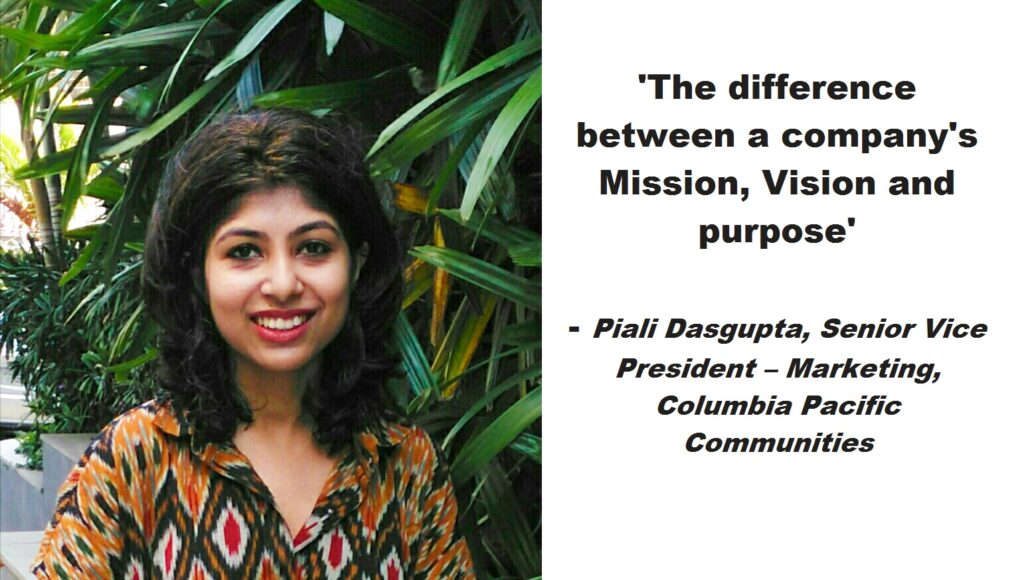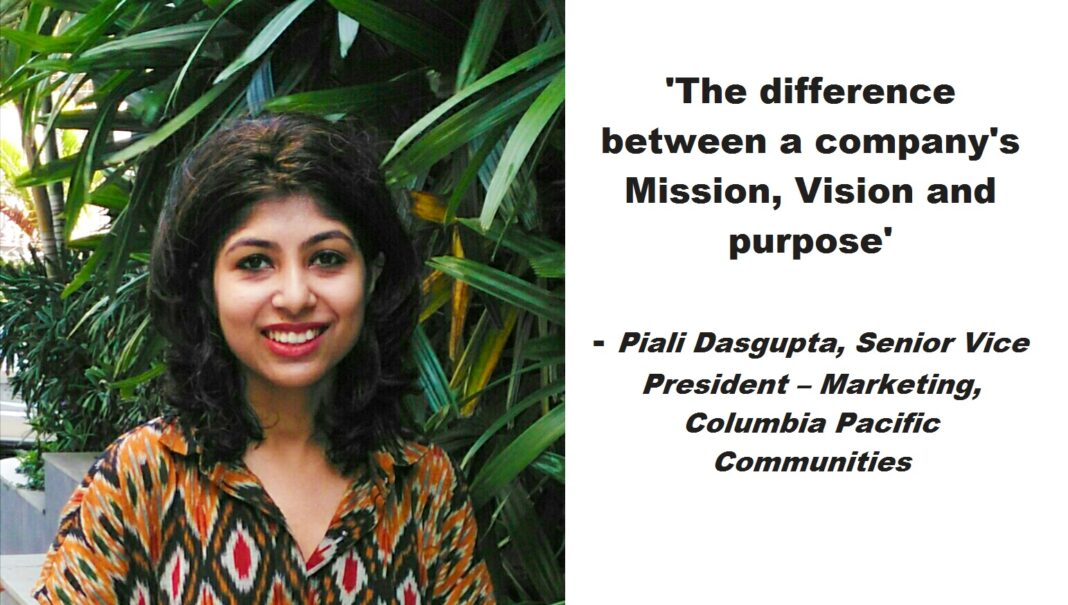Vision, mission and purpose are often terms that are grossly misunderstood, misrepresented and used interchangeably by brands. When not understood well and in their entirety by business leaders, they could lead to a lot of confusion and lack of clarity at different levels of the organisation, which in turn, can potentially lead to loss of equity, diminished profits, loss of market share and weaker consumer perception of a brand.
A company’s mission, vision and purpose jointly create impact. Often, the first two are linked to business objectives. However, the mission, vision and purpose of a brand, while being interconnected, are not one and the same thing.
The vision of a company is its long-term objectives and ultimate goal. It is the “what” that the company works towards relentlessly. The mission is the way in which it plans to reach the vision. It is the path, the tools, the strategy. In other words, “the how.”
The purpose of a company is the reason for its existence; its raison d’etre. It is at the core of everything that the company does and guides its every decision and strategy. It is the company’s North Star and forms its guiding principles. It is why the company was founded in the first place. While the vision and mission of a company can change and shift from time to time, its purpose should last forever, and be something that can never be entirely fulfilled.

Columbia Pacific Communities, India’s largest senior living community operator, was founded with the sole purpose of helping senior citizens live healthier, happier and more connected lives for longer and shining the spotlight on senior citizens, which happens to be one of the most forgotten and overlooked demographic in a world obsessed with millennials and Gen Z. All this encapsulates a philosophy called “positive ageing.” Helping seniors age positively is the brand’s true purpose.
Our vision is to be the region’s most preferred senior living community operator and become synonymous with senior care. Our mission is to bridge the need gap that exists in the category by making senior living more accessible across the country and offering high quality, comprehensive service and care to seniors. So, the missions will help us achieve the vision, and the vision is closely tied to the purpose for which we exist.
It is no secret that brands with purpose grow three times faster, enjoy higher market share, engage in at least 30% higher innovation and retain their talent more, as employees are motivated to work towards a higher purpose.
Consumers today are no longer looking for mere commodities. They are looking for brands that have a higher purpose and are committed to serve the planet and its people. This is especially true for the millennial and Gen Z demographic, with 91% millennials saying they would switch loyalty for a brand that supports a cause.
Since this realisation has dawned on businesses, many brands have tried retrofitting a purpose, in a bid to connect better with their consumers. And that makes them appear ingenuine and inauthentic. In fact, reports suggest that less than half of brands are seen as trustworthy. There is quite a bit of purpose-washing taking place all around us. And today’s woke consumers are quick to call out brands engaging in the same. A great example of purpose washing was when, a few years ago, brands stated doing rainbow branding to support the LGBTQI community, without really doing much for the community. And certain brands such as Starbucks got called out for the same.
A brand is what a brand does. And therefore, it’s very important for brands to back their purpose with solid work and walk the talk.
The vision of the 98-year-old The Walt Disney Company, is “to be one of the world’s leadingproducers and providers of entertainment and information.”
Its mission statement is: “Using our portfolio of brands to differentiate our content, services and consumer products, we seek to develop the most creative, innovative and profitable entertainment experiences and related products in the world.
So, the mission statement talks about how the company aims to stay ahead of competition, while the vision statement talks about industry leadership. In other words, the former is the journey and is about the present, and the latter is the destination and about the future.
A purpose, on the other hand, is what makes employees of a company wake up every morning and be motivated to come to work. For example, in case of Coca Cola, it is their keenness to refresh the world and make a difference. It’s why their 7,00,000-strong workforce get to work every day.
Brands need to be careful when drafting their vision, mission and purpose statements. They need to choose words carefully, because words have meaning. A brand’s vision should ideally be measurable. For example, at Columbia Pacific Communities, our mission is to be the region’s most preferred senior living community operator. Now, “most preferred” is a measurable adjective. Through brand health research, net promoter score and other tools, we can determine whether we are the most preferred player in the region or not.
Profitability and purpose can go hand in hand. One doesn’t have to be at the cost of the other. In fact, the latter unlocks the former. But profit- making is not the end goal of purpose. As the great David Packard said, “Why are we here? I think many people assume, wrongly, that a company exists solely to make money. Money is an important part of a company’s existence, if the company is any good. But a result is not a cause. We have to go deeper and find the real reason for our being.”
And the real reason often is about making a big difference in the lives of those that a company serves through invention, service and innovation.







